The 5 Types & Sizes of Hand Quilting Needles
Over the last year I’ve done a lot of hand quilting, which means I’ve formed a pretty deep and intimate trust relationship with my hand quilting needles. People tell you that you should choose your friends wisely, and surround yourself with supportive, sharp people who can move easily through fabric (that’s what I’ve heard, at least). The same goes for the needles you use! These babies have an important job to do, so you want to make sure you’re orchestrating a team of the very best hand quilting needles.
But if you’re like me, and you get paralyzed by all the choices out there and don’t know where to start, don’t worry! I can help! I’ve waded through width, length, height and sharpness, so you can skip the hours of anxiety therapy (I’ve done that for you already, too!) and let me walk you through it.


Read More About Hand Quilting!
The above quilt is the Fly Away pattern. Download it here!
Remind Me What Hand Quilting is...
First things first. Let’s talk about what hand quilting needles actually do. And what hand quilting is. Just to make sure we’re all on the same page.
Hand quilting, at its core, means sewing running stitches through your quilt sandwich (the quilt top, batting, and backing fabric) with a needle in your hand. I know that seems obvious, but it’s also kind of awesome, and kind of a big job for you and your little needle friend. Depending on the fabric and batting you choose for your quilt, it can be a long, tough trip from quilt top to backing and back. That’s why there are so many different options for the length and thickness of hand quilting needles!
Trending patterns!
Below you can see that I combined machine quilting with hand quilting.
The above quilt is the Hexie Stripe pattern. Download it here!
Needle Sizes - The Only Confusing Part
Needles have a serious case of Benjamin Button syndrome – they get smaller as they get older. And by older I mean, as the numbers get higher. I think I just made this more confusing...what I mean is – the smaller the number the larger the needle. The larger the number the smaller the needle.
Pop Quiz! Which needle is larger? A #3 or a #9? Go to the bottom of this post to see if you're right. 😉

The above quilt is the Bohemian Garden pattern. Download it here!
5 Common Types of Hand Quilting Needles
Here’s a rundown of the 5 types and sizes of quilting needles, and what makes them special:
A Hand Quilting Tradition: Betweens aka Quilting Needles
The needle that most people are talking about when they’re talking about traditional hand quilting is nicknamed a “Between.” This is a sharp, short and narrow needle with a small, rounded eye.
These little babies pack a punch because they’re short, easy to control, and they can help you make super small, accurate stitches – quickly.
I want to emphasize that these are preferred by traditional quilters who are using traditional quilting thread, which is much thinner than the Pearl Cotton No. 8 that I have grown to love.
When using these needles for hand quilting, you should pair it with thin, possibly waxed, thread, such as this.
Sizes: 3-12 If you’re a first-timer, go for an 8 or 9, and work your way up to smaller needles once you get the swing of things!
The above quilt is the Bayside pattern. Download it here!
The Big Guns: Embroidery Needles
It's my philosophy that if I'm going to spend the time hand quilting a quilt, I want people to see those stitches from a mile away...or at least 10 feet away. That's why I opt for yarn-like Pearl Cotton Thread #8 and a pack of Gold Eye Embroidery Needles. The big eyes and sharp points are great for dragging thick thread (and even embroidery floss) through the quilt layers, and the needles are strong enough that they won’t get bent in the process.
Pair these needles with a needle threader and now you're cookin' with gas!
Sizes: 1 - 12 I like to hover around 3- 6 based on the type of batting I am using. With a puffier batting, I'll use a larger needle.

The above quilt is the Maypole pattern. Download it here!
Bae Being Basic: Sharps
Sharps are your basic run-of-the-mill (not to be confused with Milliners) needles. They are very similar to Quilting Needles, just a skosh longer.
Sharps can easily be switched out for traditional Quilting Needles, and in most cases I would guess that unless you are seeing them side by side, you won't be able to tell the difference.
Sizes: 1-12 Although sizes 16-18 exist, they are huge (going against the rules of Benjamin Button law) and you won't be using them with fabric thinner than carpet. They're called Carpet Sharps.

Making Hats and Other Stuff: Milliners Needles
Milliner or Straw Needles are long, round-eyed needles that were designed for the purpose of hat making. These are very similar to Sharps, but longer. A good way to remember that is to think of fancy hat pin – it must be very sharp and long to keep those bedazzled feathers in place.
Sizes: 1-10
美しいステッチ: Sashiko Needles
Sashiko needles hail from Japan, and were traditionally used for Sashiko embroidery, a practice that is equal parts peaceful meditation and fabulously elegant.
Traditional Sashiko needles are long (about 2 inches) and they have a really small eye. Because these needles are incredibly sturdy and easy to hold, they’re getting popular with hand quilters and embroidery sitchers alike. (But maybe don't tell the traditional sashiko stitchers you're using their needles for other non-sashiko purposes. This art form has a long and rich history and they maaaay not want you changing things up with their supplies.)
Sizes: Currently unsure how these are sizes. From what I can gather, they are just called long or short? Do you know?
A Final Tip on Hand Quilting Needles...Well Needles in General
Eventually, you will need to say goodbye to your beloved needle. We open our hearts to love and it makes the saying goodbye so hard! But, sadly, needles do get dull, and there will come a time when you need to replace your precious. Just like my eye doctor is always telling me to replace my contacts even though they are so dang expensive!
Just do it. Get a new, sharp needle. It’s worth it. Your quilt is worth it. You’ll learn to love again.
Pop Quiz Answer: If you said #3, you're correct!

The above quilt is the Over the Hills pattern and is a free download when you join the Suzy Quilts Patterns Facebook group.
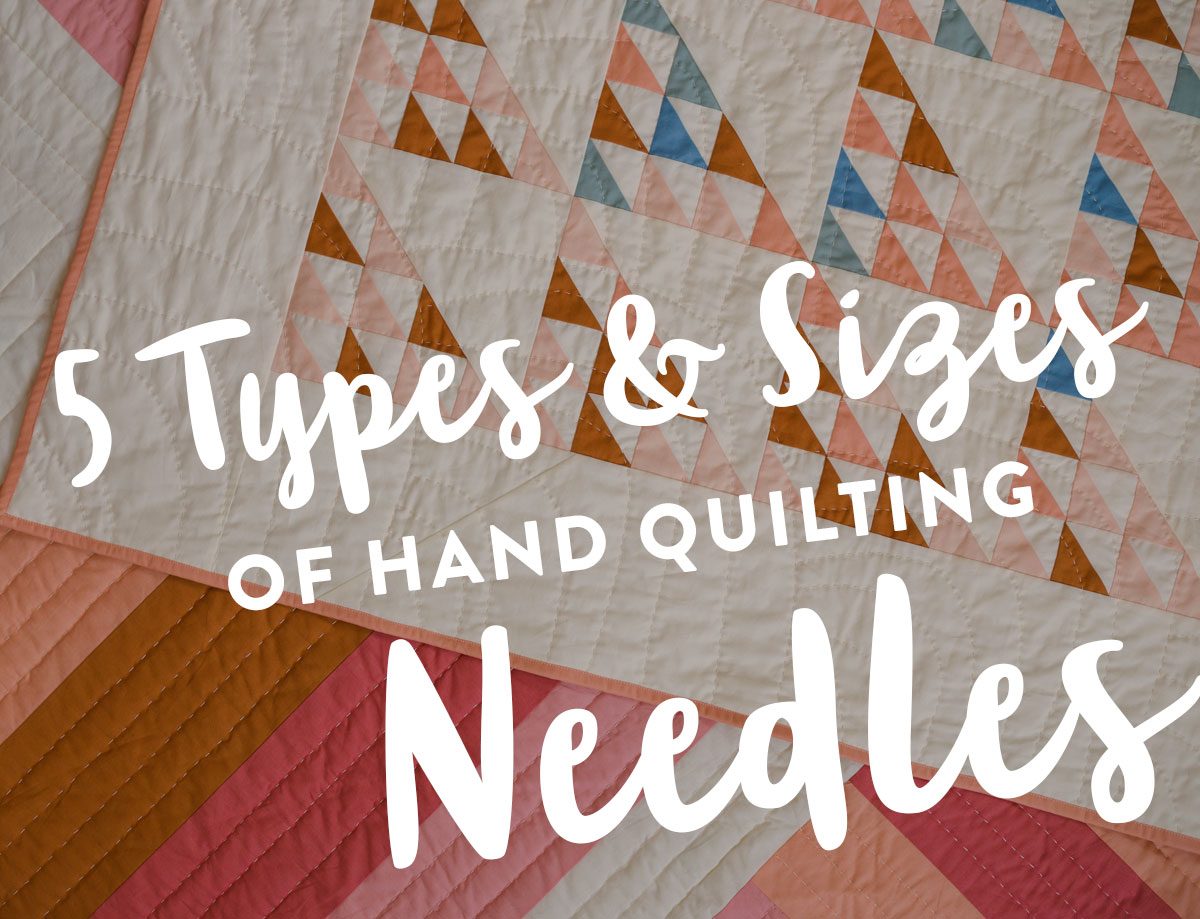
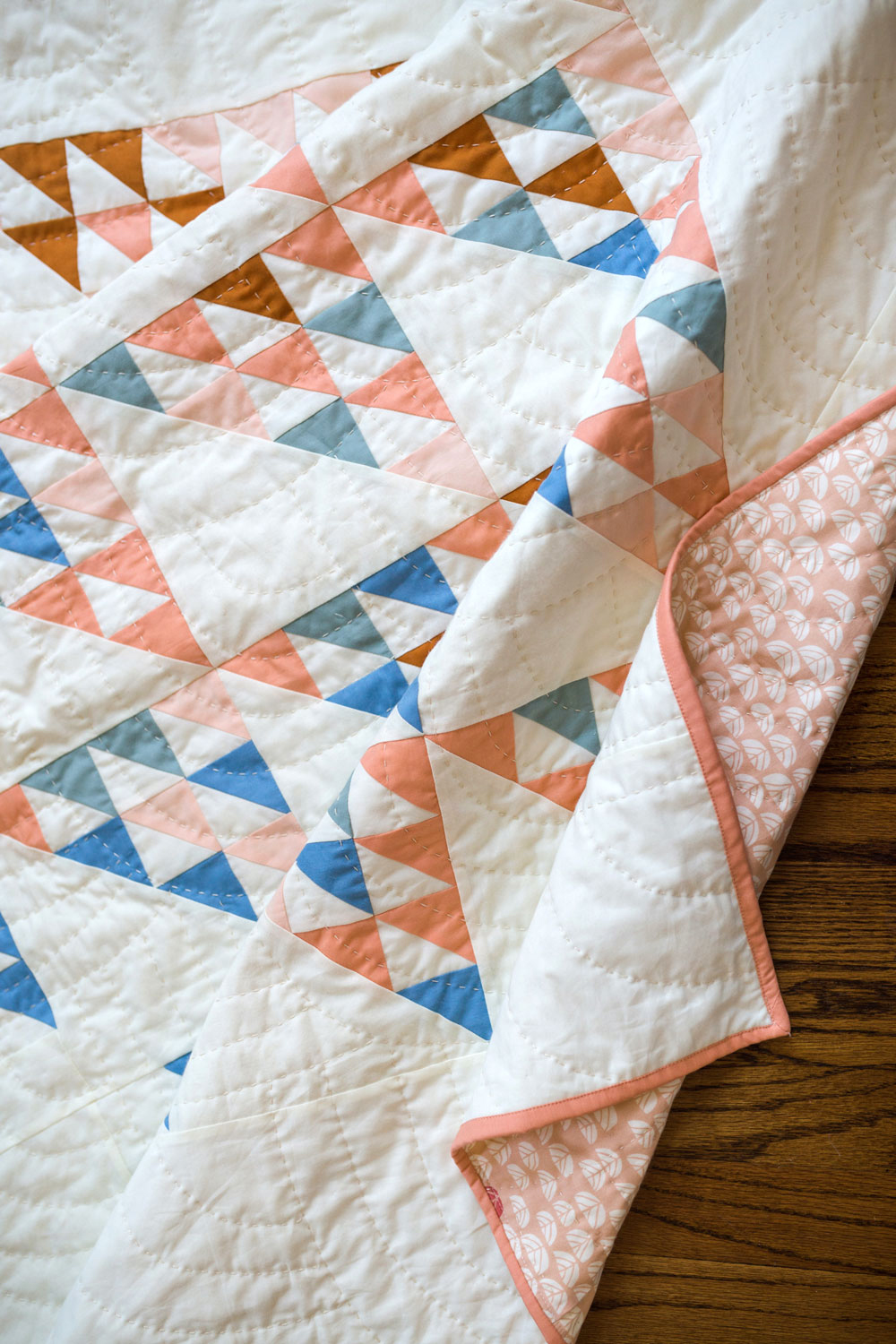
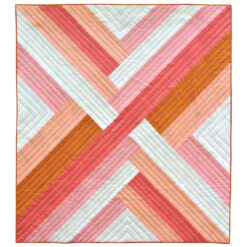
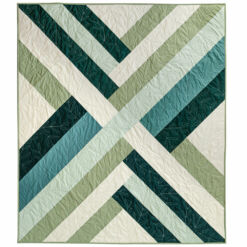
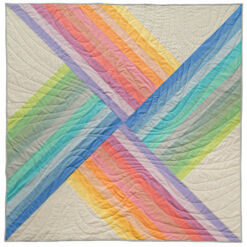
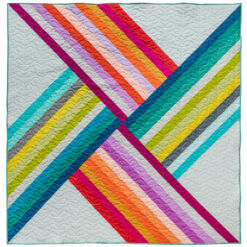
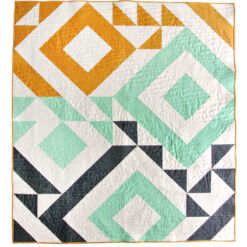
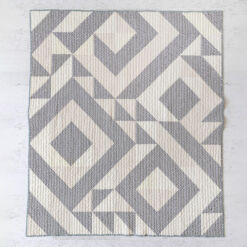
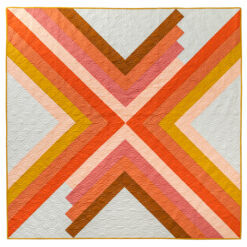
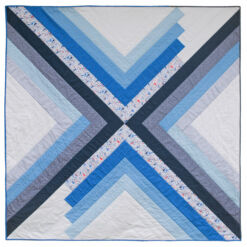
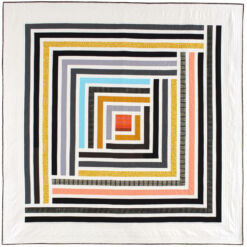
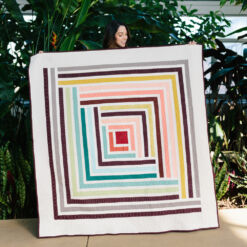
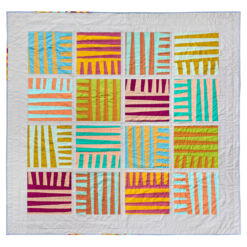
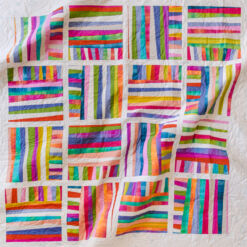
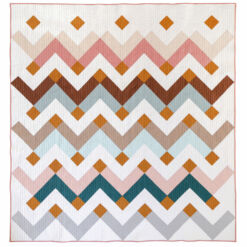
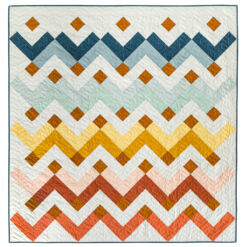
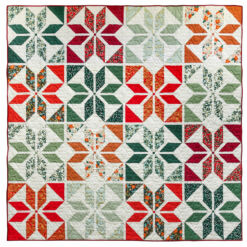
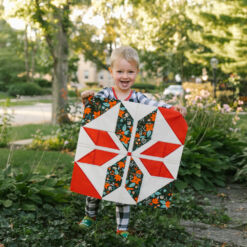
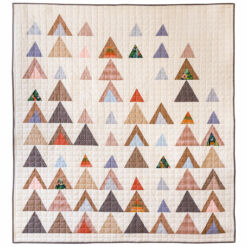
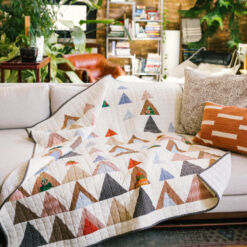








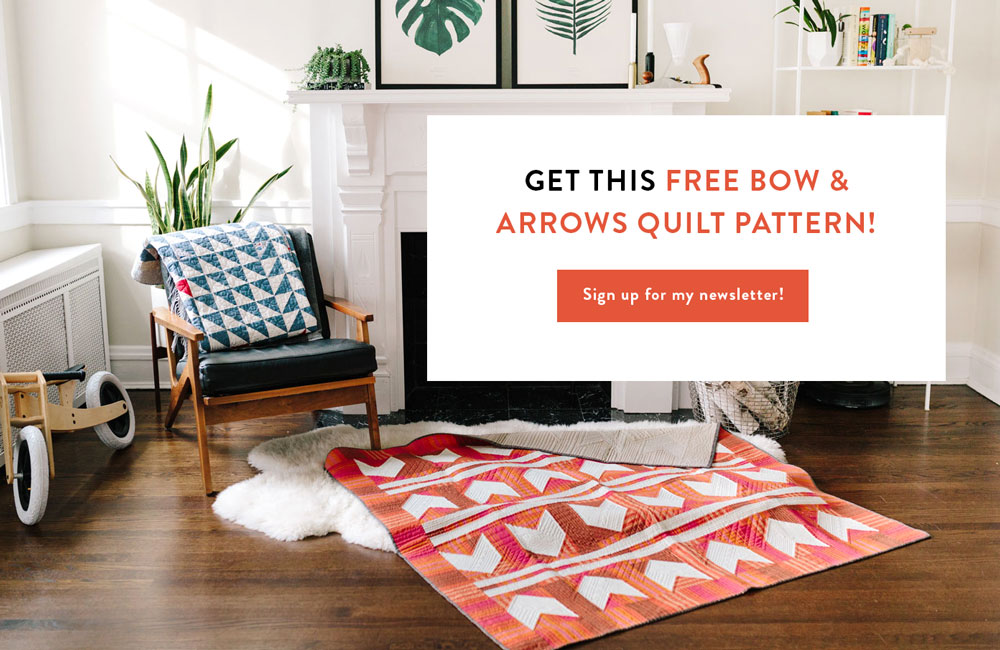
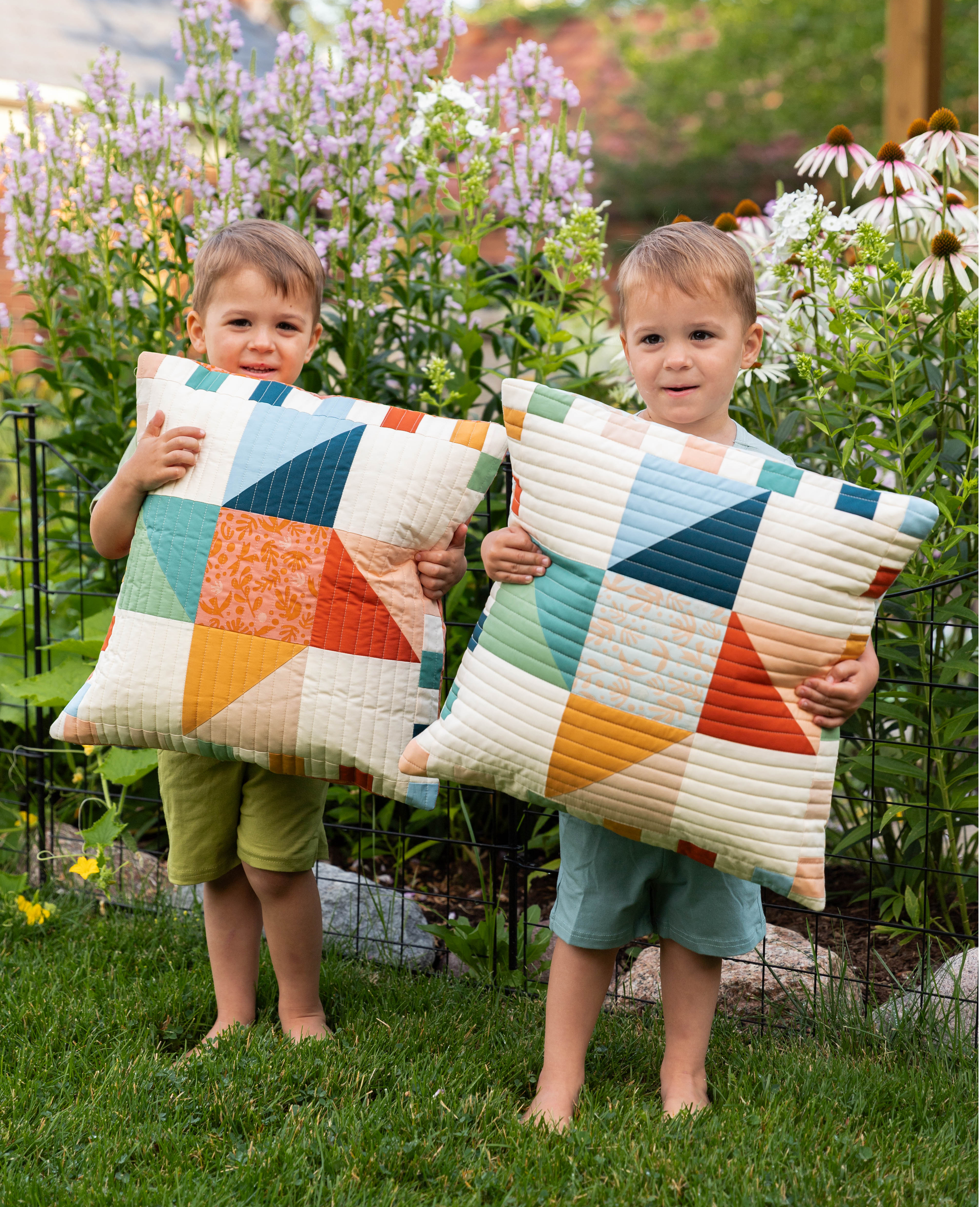

Great review!
Thank you! I hope it was helpful 🙂
Great info!! Thanks!
Thanks Suzy! I am rather new in quilting and appreciate information about needles.
Having friends that move easily through fabric is requirement #1 for me. Great post! You’re slowly convincing this ultra-lazy quilter to give hand quilting a shot!
Wow, it’s like the Wikipedia of needles!!
Great information but really wish it would have been printer friendly format.
Finally had time to sit and read this whooooooole post. Thanks for the helpful information! I look forward to trying out some of your tips.
I was on hour 3 of this sort of research and gave up and probably have one of every type of needle scattered through various project bags, boxes and drawers lol! I’m so glad this simplified things for me and where do you buy your pearl cotton thread? I only ever see 3 colors available at my local Joanns or Michaels, it’s frustrating.
I typically buy it from Herrschners – great price and amazing selection.
Great column full of very helpful info. I have often wondered what the sizes were for but never asked anyone, just bought a mixture. Now I know what I need to use! Thanks to your encouragement! I have started adding a bit of hand quilting along with the machine quilting. The first one took a while, but it was so very relaxing! I was sorry when it was finished. I’m working on my Rocksteady now doing the same thing – mixing machine and hand quilting. Can’t wait to show you!
Thanks again
I love your blog. Keep up the great job you do. Quick question, do you use a hoop when you hand quilt? If so, what size?
Thank you! I don’t usually use a hoop, but on the rare occasions that I do, I have a 14″ one.
Thanks for the info on needles. I just read some about using straw needles for binding. Have you tried them?
Straw needles are just another name for Milliners needles. I don’t use them, personally, cause they are too long for binding. I think you’ll be happier with basic Sharps or Betweens.
Question — what about needle disposal? Shouldn’t we have a special way to throw them out? After all they are still sharp enough to cause injuries.
Great point! I throw all of mine into an old Altoids tin. Once the tin gets full, I’ll pitch it, but I have a feeling that will be a while. 😉
Hi Suzy, I love your blog and patterns. I went to my drug store and got a small sharps container (the kind diabetics use for their needles) and just return it when full; although I’ll never fill it in my lifetime. HaHa
When one of my prescription drugs runs out, I repurpose the plastic bottle as a sharps disposal bin (sounds official right?). I keep it next to my sewing machine and toss in machine needles, pins, etc!
Do you recommend waxing the pearl cotton 8 for hand quilting?
You can, but I haven’t found it necessary.
I need a very long needle for international quilting stitch. Which should I purchase.
Sashiko needles would probably work best for you. Tulip makes really nice sashiko needles.
In Pennsylvania I used S.THOMAS & SONS hand quilting needles but can’t seem to find them anywhere…Can you help me? I’m now using John James Big Eye Size 10 but I don’t find them as strong. I bend them pretty fast.
If you do a Google search for those needles you’ll find a couple small shops carry them. This quilt shop is actually in my hometown of Columbia, MO 😉
Thank you for that article. Do you know the difference between “Quilting needle” and “Quilting between needle” ? Clover has those two different types of needles (f.e. art no 4960 and art. 4980) and I cannot find the info what the difference is.
When I first read your question I immediately thought, “There is no difference.” But now that you say Clover has two different products…hmmm…I don’t know. It’s possible one is short than the other, but if I were to guess which one I’d be making it up.
Thank you Suzy, I will write to Clover – they should know what they produce 😀
Hi Suzy!
I’ve just begun hand quilting using Sashiko thread and clover embroidery needles, but I’m having a very hard time getting my needle through the layers of the quilt. It seems like the eye of the needle is too big/having a hard time pulling through, even when I only do one or two stitches at a time. Could it be my fabric? or do I need to switch needles/thread? Thanks!
I bet it’s probably a combination of needle and fabric. It sounds like you’re working with a tighter weave fabric, so try a size smaller needle and see if that helps. Ideally, you aren’t struggling to pull your needle through the fabric. Try to find the sweet spot of the smallest needle you can use while still being able to thread it. A sturdy needle threader will help too.
I just started hand quilting. I have learned that if the batting has Scrim in it, it can make it really hard to quilt (sew) through the 3 layers of the quilt. Needle size makes a difference too.
I would like to buy some needles from you. I want to tie a quilt which is 2 layers of flannel and small batting.
I don’t sell products, but I link to some in this post that I think are really great!
I would like needles that will go through 2 layers of flannel and batting. Also I would like some sharp needles with big eyes
Thank you putting all of this in one place! I have been nervous about embarking on a hand quilting journey, but with all the great info, tips and links you provide I feel well prepared.
I have a problem bending my between needles. What brand makes a strong between needle about a size 9 or 10? I see John James sells a stainless steel needle. I have a large collection of different brands and find most bend. I just finished a quilt using 4 needles and all are bent. During quilting I was trying to straighten them with a pliers!
Bent needles? How annoying! The finer the needle, the more likely it will bend. Have you tried embroidery needles instead of quilting needles? They are thicker and sturdier. I like Clover Gold Eye Embroidery Needles.
What a life-saver! Thank you so much – I’ve been struggling with a heavy cotton backing – now using the embroidery needles and it’s sooo much easier. Article pinned for future reference! Love your patterns too 🙂
Thank you, very informative. I can’t use sharps, just too small for my arthritic hands . I have used embroidery needles for years, I love them to quilt! However, I designed and stitched my Sashiko quilt and used Tulip large eye Hiroshimo needles, nice and long! Very sharp, I stitched that quilt for 18 months and not one needle broke! I LOVE to qui!t with them! They are worth every penny! Much better than any other needle I have hand quilted with! You should try them, you will love them!
Hi Suzy, What needle do you recommend for basting? Or do you use curved safety pins?
Thanks !
I like to use safety pins. Any kind works well, curved or straight.
For basting, I use cotton darners. If you can find “long darners”, even better. I learned this from Wanda Hanson. I often hand thread baste, and I use two strands of embroidery floss, separated from the 6-strand floss. This will grab your layers and hold better than regular thread. I learned this from Sharon Schamber. Nothing works as well as thread basting, IMO!
I SO wish I had seen this comment earlier. But, I finally landed myself on using Cotton Darners because they were the long, sturdy, but fairly thin, big-eyed needle I needed for basting (also learned from Sharon Schamber). I love thread basting because I can sit in a chair and do it! But definitely need the Cotton Darner needles. Haven’t seen these mentioned anywhere else.
Very helpful , very clear and for beginners finally a very clear approach to the understanding of needles. I did screenshot your info and I’m going to take it with me to my needle shopping. Thank you!!!
Suzy what a NICE article. Definitely saving it. I particularly like the saying “they get smaller as they get older.” Very helpful. I’m trying to find a comfortable needle and thought I was to use a Sharp or Between. I was doing one stitch at a time, changed to a larger needle and was able to do two stitches at a time. Then noticed how nice the stitches were in a straighter line. Trying to make small stitches is a challenge. Your article and all the comments have been very helpful. I have to laugh because I can relate to some of the problems they bring up. Thank you.
Thanks for all the info! What needle would you recommend for the hand-tie part of the quilt? I have a hard time getting the needle through all the fabric. Is there a hole punch that can be used?
Hi Pat! We have to blog posts that would be super helpful:
https://suzyquilts.com/quilt-tying-tutorial-how-to-tie-a-quilt-with-yarn-or-embroidery-thread/
https://suzyquilts.com/how-to-tie-a-quilt-with-a-modern-twist/
I hope this helps! 🙂